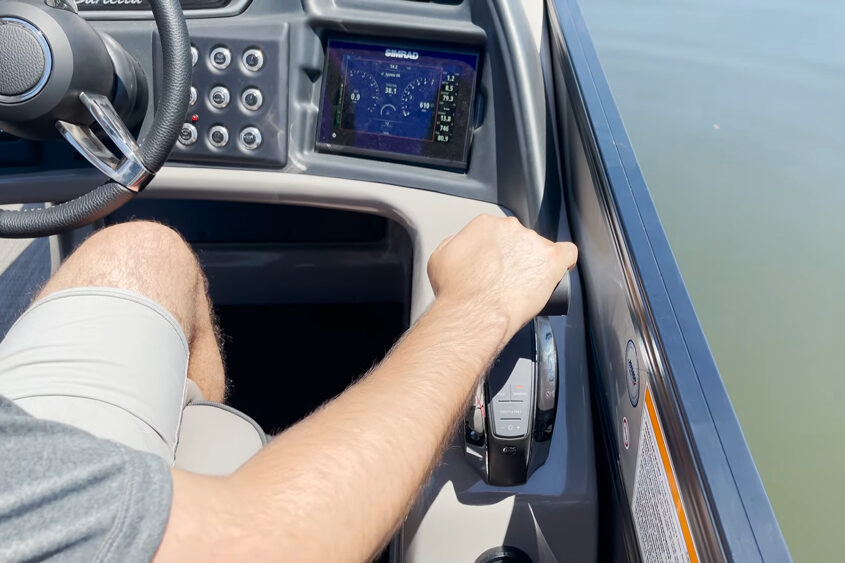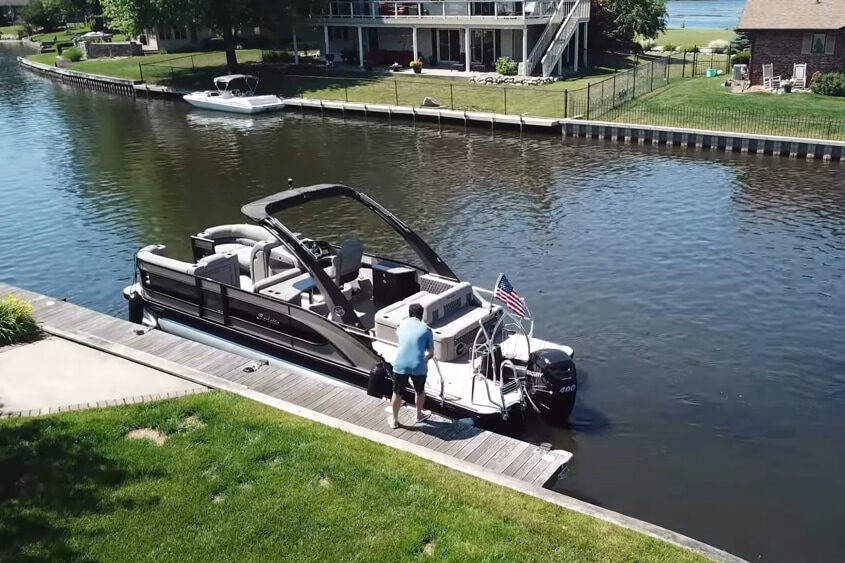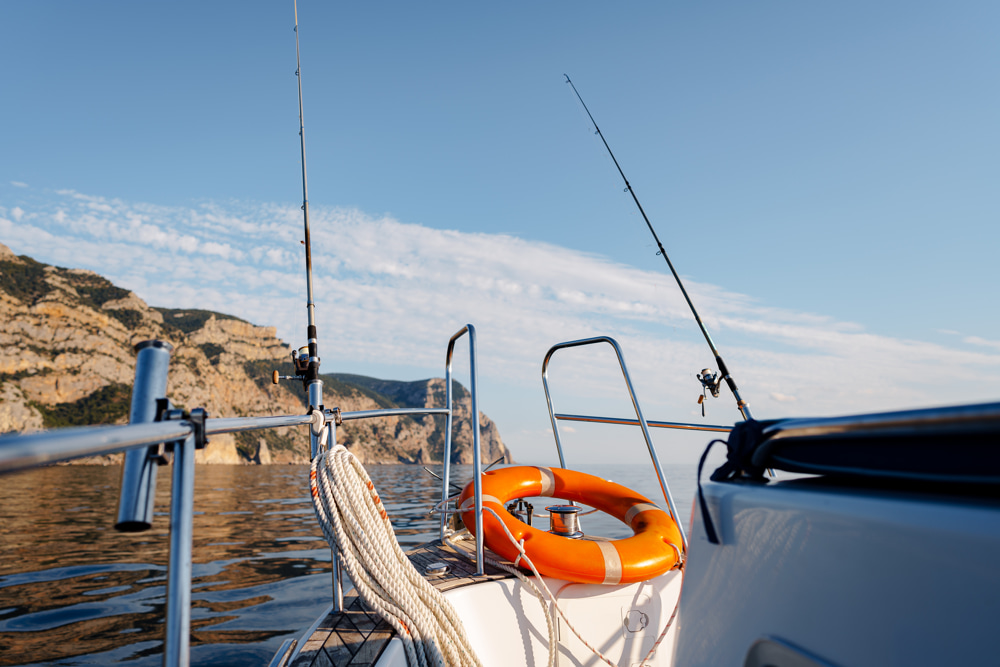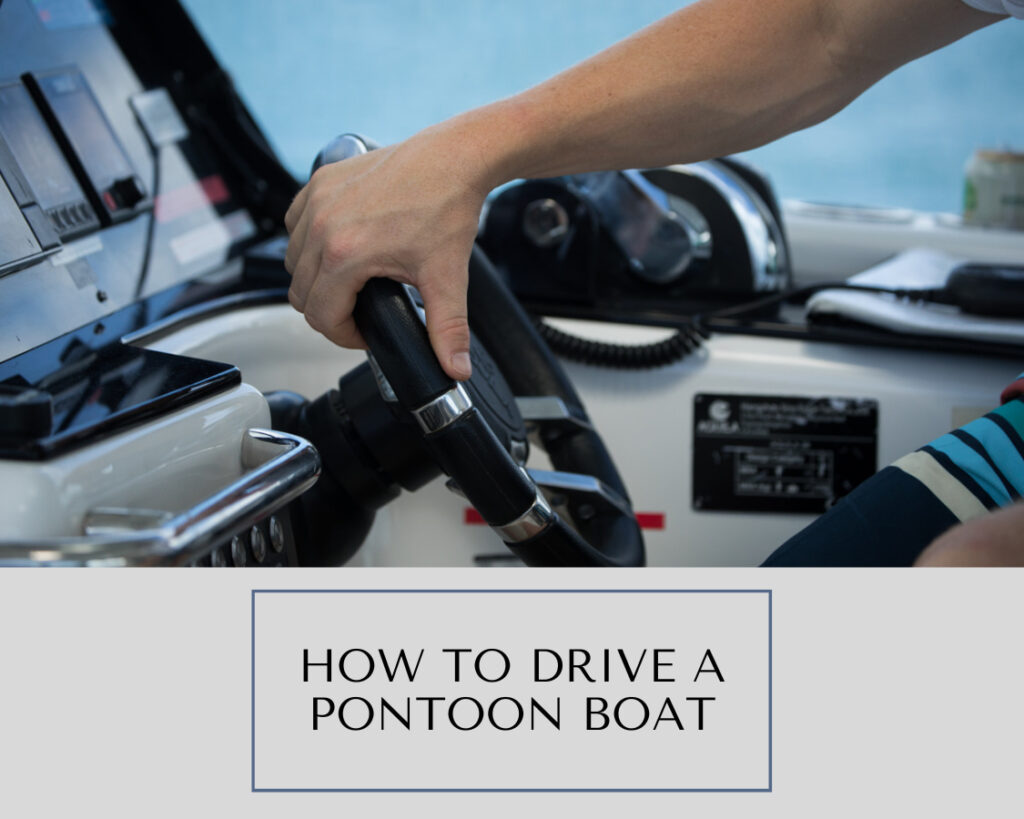If you’ve ever daydreamed about gliding gracefully across the water, a pontoon boat could be your ticket to aquatic escapades. These adaptable boats are ideal for relaxed outings with loved ones, fishing escapades, and beyond. Nevertheless, piloting a pontoon boat demands a certain level of expertise and finesse to guarantee a safe and enjoyable experience. In this all-encompassing guide, we’ll take you on a journey through the fundamentals of pontoon boat operation, from the initial steps to handling different scenarios while on the water.
Before You Start
1. Prioritizing Safety
Safety should always be your foremost concern when embarking on a pontoon boating adventure. To ensure the well-being of everyone on board, each individual must be equipped with a properly fitting life jacket. In addition to life jackets, you must verify the presence and functionality of essential safety equipment, including fire extinguishers, flares, and a well-stocked first-aid kit. These items serve as vital safeguards against unforeseen emergencies and accidents, offering you and your passengers the peace of mind necessary for an enjoyable outing.
2. Weather Conditions
Before you set sail, assessing the prevailing weather conditions is crucial. Stay informed by checking the weather forecast, and exercise prudence by avoiding any plans to go boating when faced with stormy or high-wind conditions. Doing so will enhance your overall safety and contribute to a more enjoyable and comfortable experience on the water, as challenging weather can quickly turn a pleasant trip into a scary one.
3. Getting Acquainted with the Pontoon Boat
For those who are new to piloting a pontoon boat, it is essential to allocate some time for familiarization with the vessel’s controls. Gaining proficiency in operating the boat’s components, including the throttle, steering wheel, and any navigation instruments, is fundamental to ensuring a smooth and trouble-free journey. A comprehensive understanding of these controls empowers you to navigate precisely and confidently, greatly enhancing your boating experience.

Getting Underway
1. Startup Procedures
Before setting off on your pontoon boating adventure, ensuring your vessel is well-prepared for the journey is crucial. Start by confirming that the boat is adequately fueled and that all systems are in good working order. Follow the manufacturer’s instructions meticulously to initiate the boat’s engine, ensuring a smooth start to your excursion.
2. Throttle Control
Pontoon boats are typically equipped with outboard or sterndrive engines. To navigate forward, gently push the throttle lever forward, and conversely, gently pull it back to reverse. Exercise caution when adjusting the throttle, as abrupt movements can lead to passengers losing their balance, potentially compromising their safety.
3. Steering
Steering the pontoon boat is a straightforward process. Utilize the steering wheel to dictate the boat’s direction. Turning the wheel to the right will result in a rightward movement while turning it to the left will steer the boat to the left.
4. Watch for Traffic
Maintaining a vigilant watch for other watercraft, buoys, and markers is paramount. Keep a safe distance from neighboring vessels and strictly adhere to navigation rules to prevent collisions and ensure the safety of all on board.
5. Maintaining a Safe Speed
Obeying speed limits is a legal requirement and a crucial aspect of boating safety. Familiarize yourself with speed regulations in your boating area and strictly adhere to them. Adjust your speed based on the prevailing water conditions, particularly in areas with heavy boat traffic, narrow channels, or rough waters.

Navigational Aids
To aid in navigation and avoid potential hazards, consider the following:
- Charts and Maps: Employ nautical charts or GPS navigation systems to assist you in navigating unfamiliar waters with precision.
- Buoys and Markers: Learn the significance of buoys and markers, as they offer invaluable information about the waterway. Remember that red markers should be kept to your right (starboard) when traveling upstream, while green markers should be on your left (port).

Returning to Dock
The conclusion of your boating excursion involves returning to the dock safely:
- Approach Slowly: Approach the dock gradually, taking into account wind and current conditions to execute a smooth landing.
- Secure the Boat: Upon reaching the dock, secure the boat with ropes and fenders to safeguard against damage due to contact with the dock or other vessels.
- Turn Off the Engine: Finally, turn off the boat’s engine and ensure the vessel is securely moored before disembarking, concluding your journey with the utmost safety and responsibility.

Handling Emergencies
1. Dealing with Engine Failures
Engine troubles can strike unexpectedly while you’re out on the water. Learning how to troubleshoot common engine problems and understanding what steps to take during a breakdown is essential for every boat owner. Gain insights into identifying warning signs, diagnosing issues like fuel and ignition problems, and keeping your pontoon boat’s engine running smoothly.
Discover the best practices for handling engine failures, from checking for loose connections to attempting restart procedures. We’ll also guide you on when it’s safest to anchor or seek assistance from a towing service. Being prepared for engine-related emergencies ensures your safety and helps you protect your pontoon boat investment.
2. Handling Rough Waters
Navigating rough waters can be challenging, but with the right knowledge, you can ensure a safe and enjoyable boating experience. Our tips will help you confidently handle choppy conditions and maintain control of your pontoon boat, even when faced with unexpected waves or turbulent waters.
Learn how to adjust your speed and trim to minimize the impact of waves, keep a lookout for potential hazards, and understand wave behavior principles. These skills will boost your confidence, ensuring you and your passengers stay comfortable and secure during your pontoon adventures.
3. Emergency Signals and Calls
In emergencies, effective communication is paramount. Discover how to signal distress and make emergency calls effortlessly, potentially saving lives on the water. We’ll provide a clear understanding of internationally recognized distress signals using flags, lights, and sound signals.
Additionally, we’ll share essential emergency numbers and communication channels to have on hand, making it quick and easy to connect with the right authorities or rescue services when needed. Being well-versed in these communication procedures ensures help is never far away, enhancing your ability to handle emergencies on your pontoon boat with confidence and ease.

Conclusion
In conclusion, embarking on a pontoon boating adventure offers endless aquatic escapades with loved ones and memorable fishing outings. However, it’s imperative to prioritize safety, starting with proper life jackets and essential safety equipment. Monitoring weather conditions and getting acquainted with your pontoon boat’s controls are fundamental to ensuring a safe and enjoyable journey.
As you get underway, meticulously follow startup procedures, control the throttle with care, and steer confidently. Vigilance in watching for traffic and maintaining a safe speed is crucial for everyone’s safety. Utilize navigational aids such as charts, maps, buoys, and markers to navigate with precision.
When it’s time to return to the dock, approach slowly, secure the boat, and turn off the engine responsibly. Additionally, preparing for emergencies, whether dealing with engine failures, handling rough waters, or making emergency signals and calls, is essential for every pontoon boat enthusiast.



